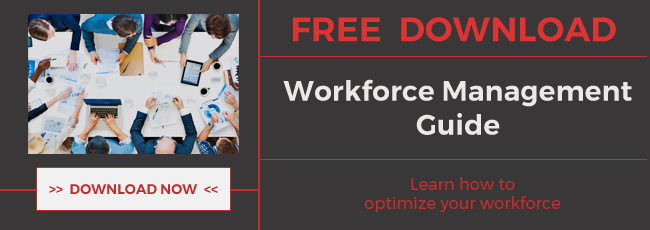The upsurge in the American economy has brought with it an increased number of job openings. This has led to more unhappy employees to leave their jobs to take on new, more promising, positions.

The challenge for employers and HR professionals is to reduce their employee turnover, while increasing their retention and employee loyalty. And, in this competitive business and hiring environment, that is no easy task.
According to recent data from the federal Bureau of Labor Statistics (BLS) the percentage of workers quitting their jobs each month had reached a rate of 2.4 percent, 3.6 or million workers. And the rate of employees being let go or laid off was steady at 1.2 percent, or 1.8 million.
And the task of finding, recruiting and keeping quality talent is getting harder for employers.
The Real Cost of Employee Turnover
Aside from the hard costs involved, which are usually easier to track and calculate, there are a number of associated and residual costs that many organizations fail to account for. These run the gamut of decreased productivity, training costs, and lost skills and organization knowledge.
Calculating these costs is tricky at best since every business and every industry is different. However, many firms specialize in this arena and studies have been done to quantify most of these "intangible" costs. One company, Bonusly, provides an online calculator to estimate the overall cost of employee turnover. For example, a modest-sized company with 100 employees whose salaries average $50,000 per year would incur an annual employee turnover cost of about $258,000 if they lost an average of 10 employees each year.
This infographic illustrates some of the pertinent facts around employee turnover, retention and the role of your company culture.

Getting Better at Being an Employer of Choice
Most employers and managers realize that salary is not the sole driver or motivator for employee job satisfaction and loyalty. An old saying in the business world is that, "People don't leave bad jobs; they leave bad bosses."
In fact, one Gallup survey of more than one million employed U.S. workers found that the number one reason given by people who quit their jobs was a bad boss or immediate supervisor. In other words, out of a million former employees, 75 percent of those who voluntarily left their previous jobs did so because of their bosses and not because of the job.
In a competitive job market - an "employee's market" as analysts are observing today - being an employer of choice is critical. And, with the relative transparency provided by employer ranking websites, employee reviews, and social media, organizations are largely exposed to scrutiny by prospective talent. While a business may succeed in hiring new workers, keeping them is just as crucial.
According to an article from Bonusly,
A critical step in reducing turnover, one that all employees appreciate and respond to, is recognition. In a study by Bersin & Associates, organizations with recognition programs that were highly effective at improving employee engagement had 31 percent lower voluntary turnover than those with ineffective recognition programs. As it stands, 66 percent of workers are likely to leave their job if they feel unappreciated.
The culture of an organization is key to both attracting and retaining workers. A good manager or supervisor will be hard-pressed to compensate for a toxic work environment, or a company culture that does not appreciate employees. However, a positive and engaging culture will "weed out" toxic or ineffective managers.
Managing and fostering an engaged and thriving workforce is a multi-faceted task that involves a number of activities and functions. And building and maintaining a positive and effective culture is a significant part of that task.
Most importantly, it must be acknowledged that the responsibility for building that culture falls primarily on the leadership of the organization, and managers must be accountable for incorporating the various aspects of a great culture on a daily basis.
Your Professional Team for Payroll Management
Along with making wise hiring decisions, a key strategy for reducing overhead, employee costs, and streamlining operations is to outsource many of the time consuming and labor intensive processes. For most businesses, the most strategic option is to outsource their payroll management functions.
A professional agency such a Accuchex can provide much-needed help with Human Resources needs and questions. Accuchex is a full spectrum Payroll Management Services provider offering expertise in Time Management, Insurance and Retirement issues, as well.
If you are looking for reliable resource for your HR issues, we can help. Get your Free Download: Payroll Outsourcing Guide to help you make an informed decision, or call Accuchex Payroll Management Services at 877-422-2824.





